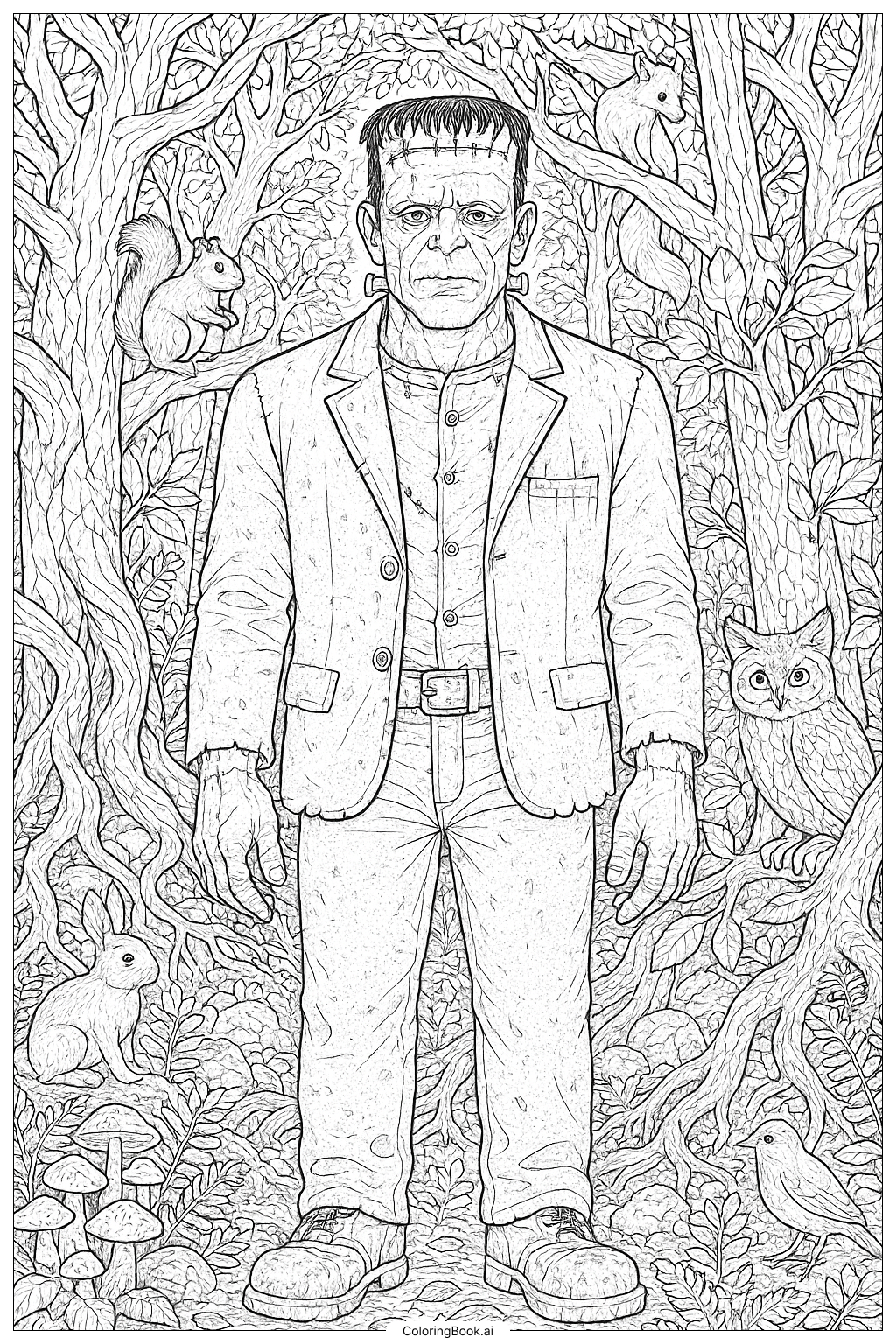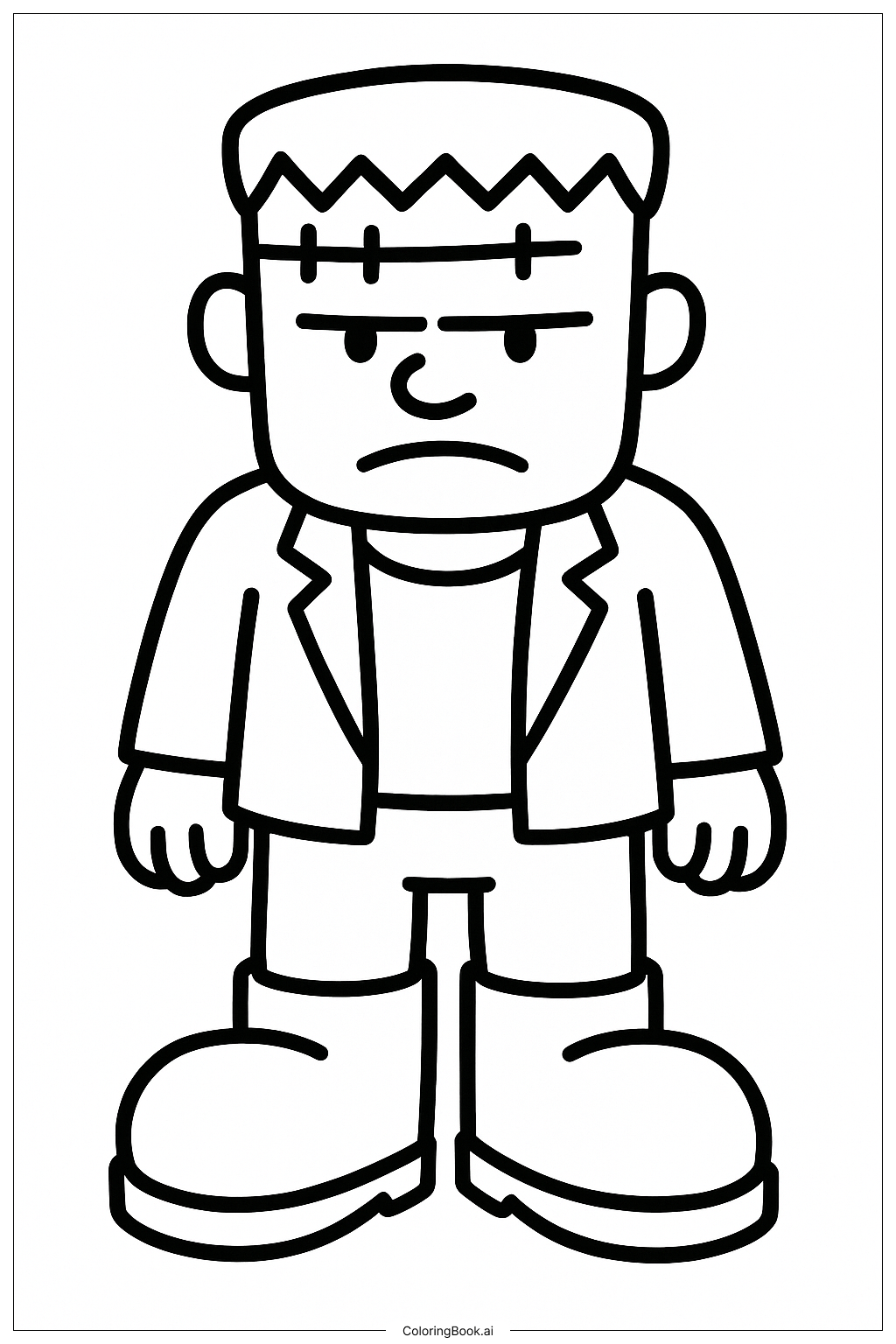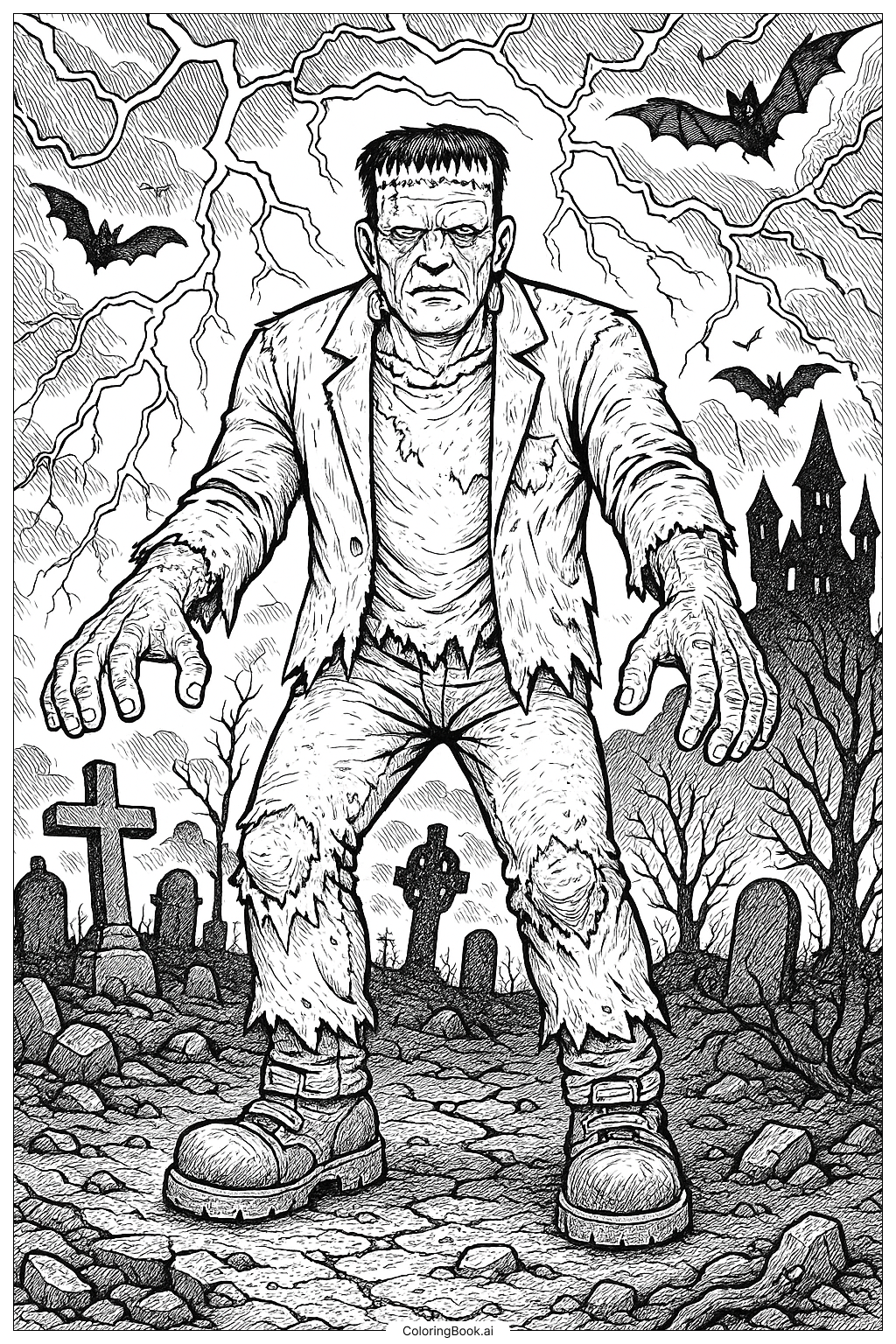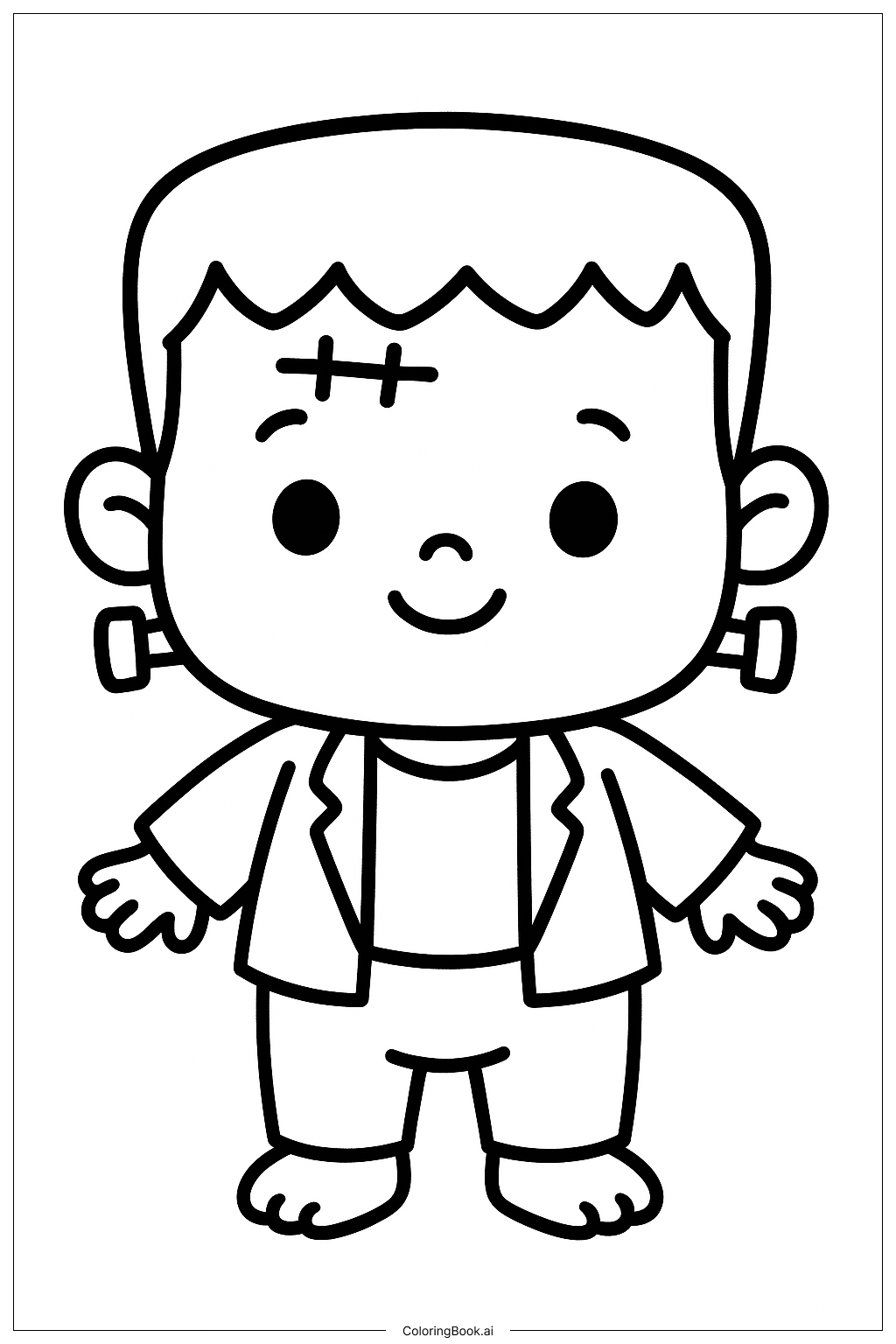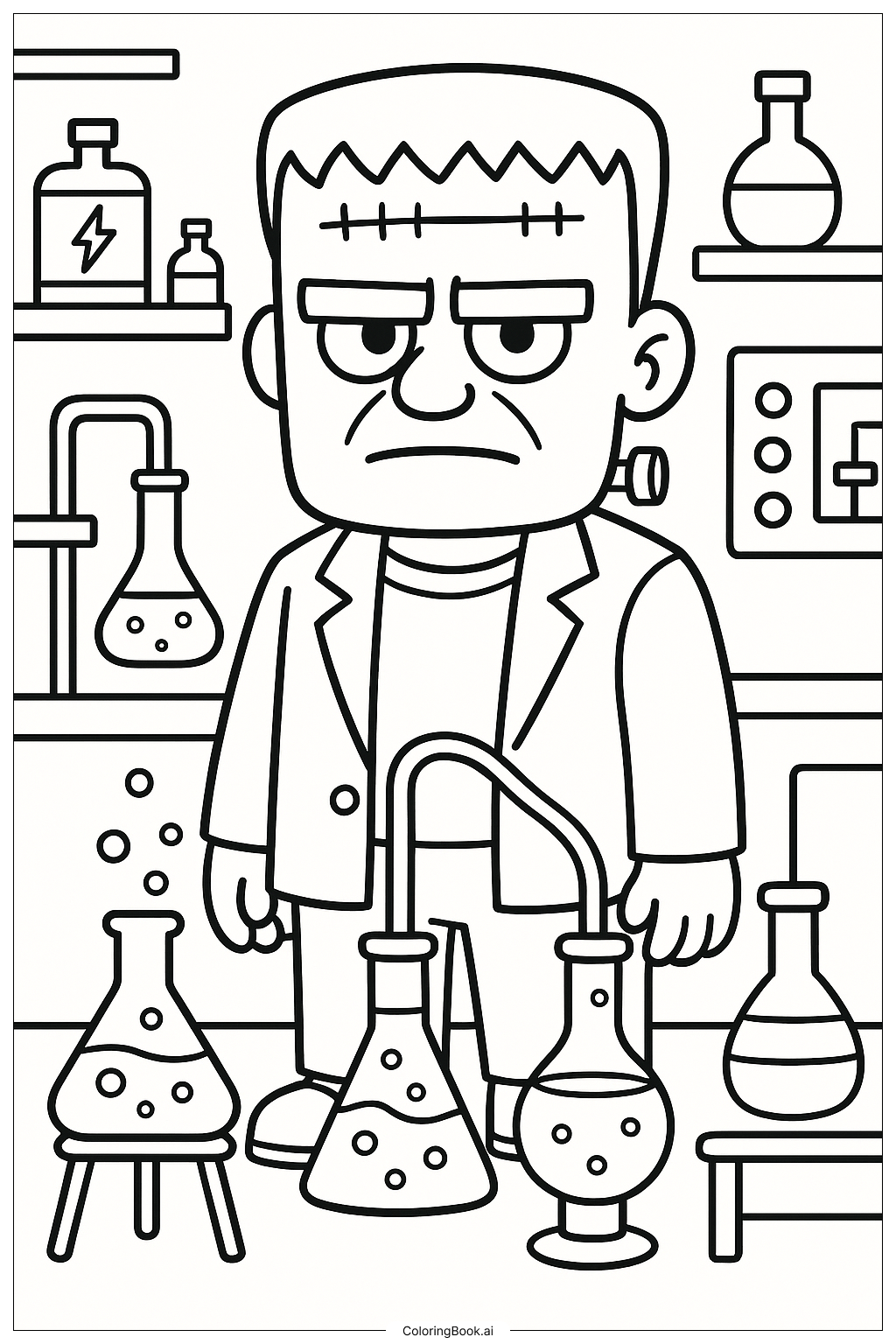Coloring tips: How to color Frankenstein In A Complex Forest Scene coloring page well?
Use different shades of green to color the trees, leaves, and plants to create a lively forest scene. For Frankenstein, use grayish-green or pale skin tones to give him a classic monster look. His clothes can be colored in dull browns, grays, or blues to match his old and worn appearance. Color the squirrel and rabbit in natural browns and grays to make them look realistic. The owl can be shaded with soft browns and cream colors to highlight its feathers. Mushrooms can be colored in reds with white spots for a striking effect. Use darker colors for the roots and tree trunks to show depth. Take your time with small details to make the picture come alive.
Coloring challenges: Which parts are difficult to color and need attention for Frankenstein In A Complex Forest Scene coloring page?
1. Detailed Background: The complex forest with many leaves, branches, roots, and animals requires careful coloring to avoid going out of lines and to keep the details clear.
2. Small Animals: The squirrel, rabbit, owl, and bird are small and require precise coloring to highlight their features without mixing colors.
3. Frankenstein’s Face and Clothes: Coloring Frankenstein’s face needs attention to highlight scars, stitches, and his serious expression. His worn and torn clothes also require careful shading for texture.
4. Multiple Shades of Green: Using various shades of green for the forest can be challenging but is important for a realistic look.
5. Layering and Depth: Showing depth by layering colors in the roots, tree trunks, and foliage to create a 3D effect demands patience and skill.
Benefits of coloring books: Advantages of drawing Frankenstein In A Complex Forest Scene coloring page
Coloring this picture helps improve focus and attention to detail because of its many small parts. It encourages creativity in choosing colors for nature and Frankenstein. It also teaches patience and fine motor skills when coloring small animals and detailed leaves. Coloring nature elements can be calming and relaxing. Overall, it is a fun way to explore color blending and shading while connecting with a classic story character in a natural setting.
